Listen to the interview with Tom Rademacher:
Sponsored by Alpaca and EVERFI
This page contains Bookshop.org links. When you make a purchase through these links, Cult of Pedagogy gets a small percentage of the sale at no extra cost to you. What’s the difference between Amazon and Bookshop.org?
I’m pretty good at teacher-things, lots of them anyway. I’m good at speaking in front of groups, thinking on my feet, at things like empathy and listening and holding my pee. However, if I can be vulnerable and honest with you, I’m awful awful awful at bulletin boards. I’m awful at just about anything that counts as decorating (except for using old typewriters as bookends, which is the one way I decorate my classroom, my living room, and my office. I’d wear a manual typewriter as a necklace or hat to decorate myself if they weren’t so heavy).
The pressure to present an Instagram-ready classroom for Open House is strong, and notable for being only the first unrealistic expectation put on teachers every year. And like many of those unrealistic expectations, there’s often a lot of work required for something that doesn’t make it easier to do our job well. I’ve never really gotten into the class decorating thing, and not just because I’m awful at it.
I’ve just never wanted my classroom to feel like my space. A classroom, in so many ways, is something that a teacher and students build together.
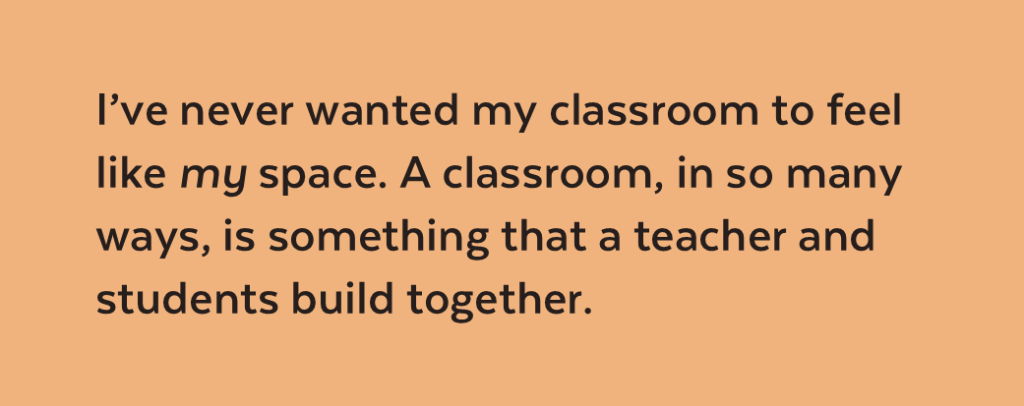
I’ve read every piece of research on the topic (I haven’t), and properly trendy color palettes or bulletin boards that belong in art museums do not actually help kids learn to read, communicate, or calculate any better (I assume).
Over the course of many years of first days of school, I developed a series of activities that fit these goals for the first week of school and for my classroom space:
- Learn about my students beyond their first names
- Let my students learn more about me
- Show my students that this classroom is theirs, that they are welcomed and affirmed here
I also wrote a series of books, Bucket and Friends, that follow a group of kids as they tackle kid problems through projects like this, but you don’t need the books for these projects to have an impact.

The One Word Wall
When I start this project, I hand out this sheet and draw a similar bubble map on the board with my name in the middle. If you want, you could have students start with a brainstormed list first, or just have them fill in the bubbles. The goal is to put five things that describe you most — one in each bubble. Depending on how chatty your kids are that early in the year, you can ask them what kinds of words people may include (physical characteristics, personality traits, values, beliefs, family or personal history, hobbies, goals, talents, etc.).
The brainstorming process can be challenging, but is really important because, as the main character of my Bucket and Friends books says, “It’s really hard to decide on an idea when you have a thousand ideas, and it’s also really hard to come up with one idea when you don’t have any at all. One is the hardest number of ideas to have.”
One Word Only (except when not)
Single words work best, but are not a necessity. I do tell them not to smush things together that don’t belong. If they can’t decide between gymnast and baker, they shouldn’t put gymnast-baker. However, if they identify as Mexican and American, they absolutely don’t need to pick one.
Safe Space
I also let students know that they should only share what they are comfortable sharing, and if they want to write something down that they don’t want people around them to read, they can put a code word down that only they know. I have very rarely seen a student use this option, but the message is an important one. I also underline that students shouldn’t suggest words for each other or comment on the words a classmate has or doesn’t have in their circles.
Share and Strike
When everyone has had time to fill their bubbles, I’ll share a bit about my own five words and why I picked them (telling them a bit about myself in and out of my role as teacher). I may talk about having ADHD (which, so long as they’ve been in my room at least 15 minutes is a surprise to no one) and what that meant for me in school, but also a bit about starting to write when I was about their age and what it means to me now.
If a few students are struggling to get to five, I’ll ask what words people have put in theirs they want to share to help generate some more ideas. I’ll also point out that my five words change every year, sometimes by the end of the day, and that’s ok. Nothing about this is permanent or legally binding.
Lowering the stakes a bit can help with the next step, which is to cross one off. As much as feels right, you can share why you picked the word you did and ask if anyone else wants to share their process (what was hard or easy to pick, etc.) as you move through, one by one, crossing off until you only have one left.
Removing a Piece of Identity
For some, this is no big deal. Adults seem to struggle more with crossing things off, and I’ve seen tears and refusals with adult groups I’ve done this activity with. Part of the goal of doing this is to get to that single word, but there’s also room here for some powerful reflection on what parts of our students’ identity they are asked to remove at school, and what sort of impact that may have.
Their One Word
When students have their one word, we usually do some more sharing and reflection on the process and the one word they have ended with. At this point, I’ll show some examples of Word Walls from previous years and other classrooms to give them an idea of what they can do with their one word. Then, they pick whatever color they’d like of the blank strips of paper, and I let them know that before they put their word on it, they should do two important things:
- Make sure it’s the word they want. The process is important, but they can put whatever word they want to to go on the wall and be public.
- Double check the spelling. Double double check it after that.
I usually give them the night to work on it and some flexible time in class where it’s one of a few options.
Sharing the Wall
I’ve finished walls in a few ways. I’ve had students show their word and talk a little about it before it gets added, almost like a ceremony. I’ve also had the pieces slowly added over the week as students are ready. When it’s done, students will often bring each other over to point at their one word. “There I am,” they’ll say, “that’s me.”
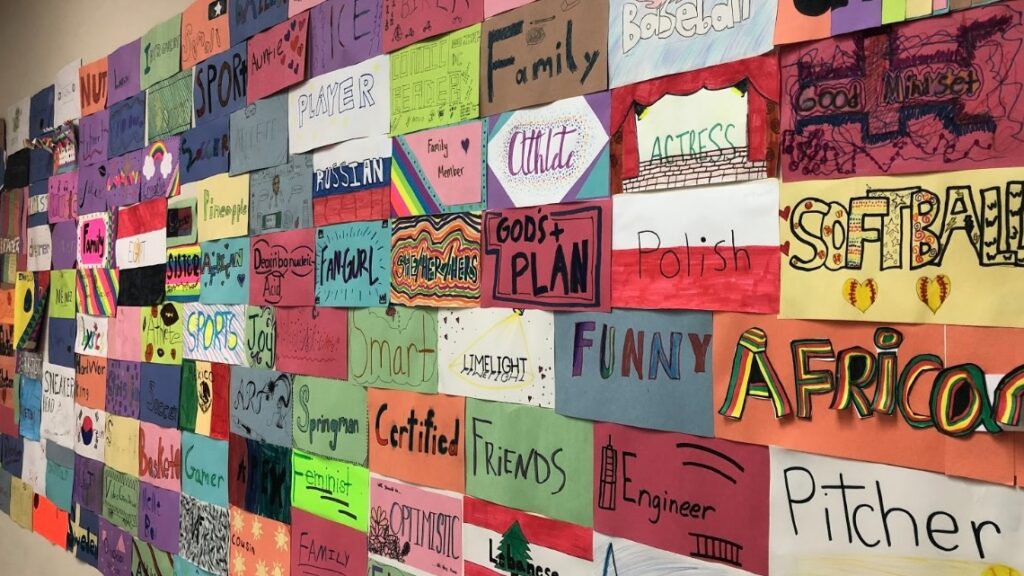
One very cool thing is how often I’ve had teachers from around the building and students from previous years come down to my room on the second or third week to see the new wall. I let it hang all year, a creation and a reminder that we have depth, we have difference, and we are all in this together.
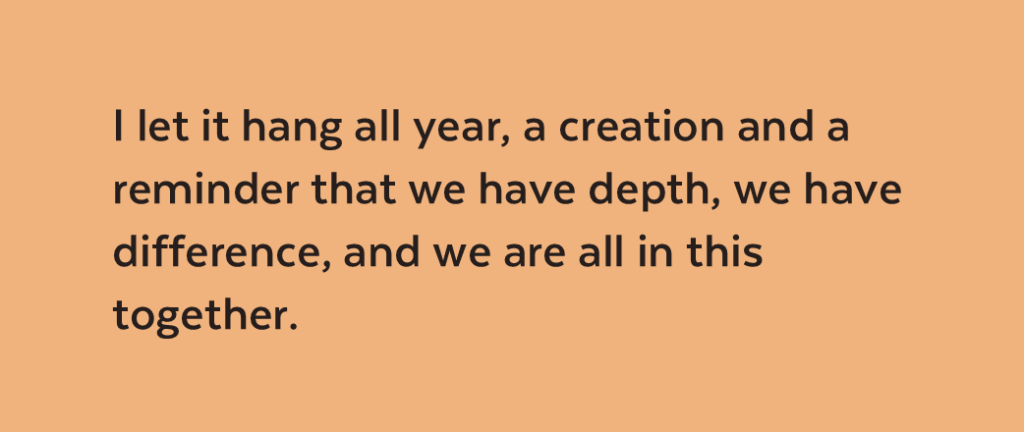
What Next?
During the rest of that first week, l do a project I call the What You Bring project. There’s a planning/brainstorming sheet, but this is a much more open-ended project where students will make some visual representation of what they bring into the classroom every day. Here, rather than talk about one word that most describes them, I encourage them to think about all the many parts of who they are, what they love, and what sorts of talents, passions, and knowledge they bring with them to school every day that may not fit neatly into one of their core classes.
Brainstorming is a key step here, as is giving some time before the final projects are due, because students can easily default into the one thing they’re known for, and I try to encourage them to think about things that people in the class may not know or that their teachers may not get to see.
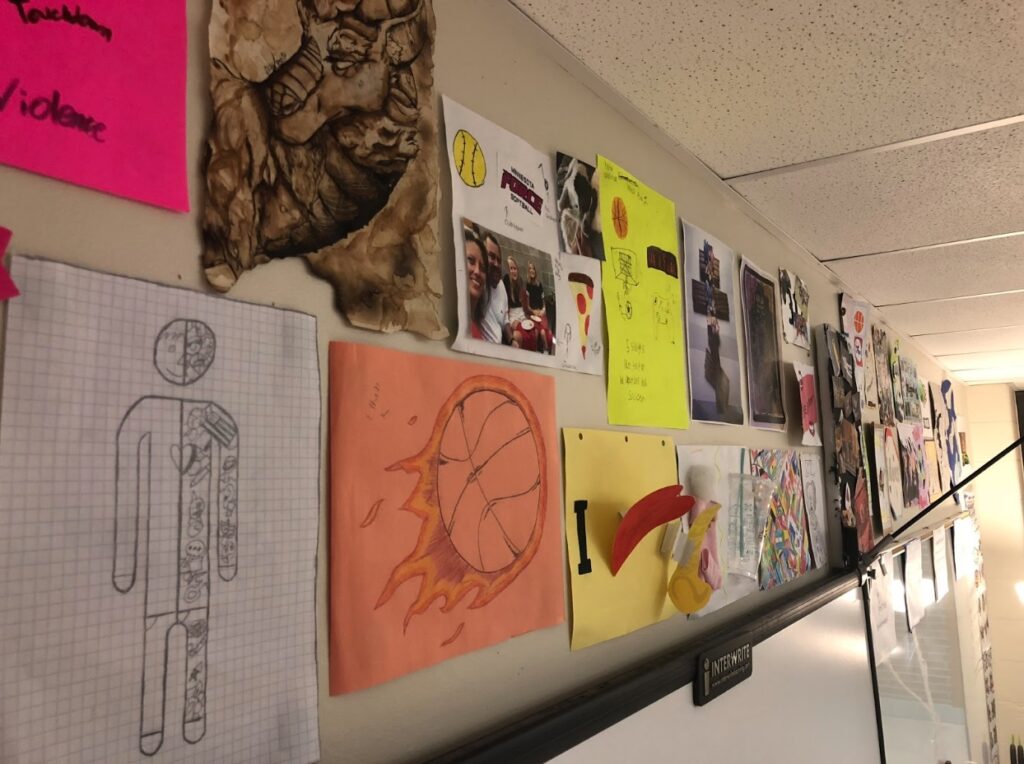
Students often do collages, and there are lots of identity collage examples online you can show for those who are stuck; but students have also done artwork, paintings, written songs (and printed the music), made mini-sculptures and QR codes to games they programmed.
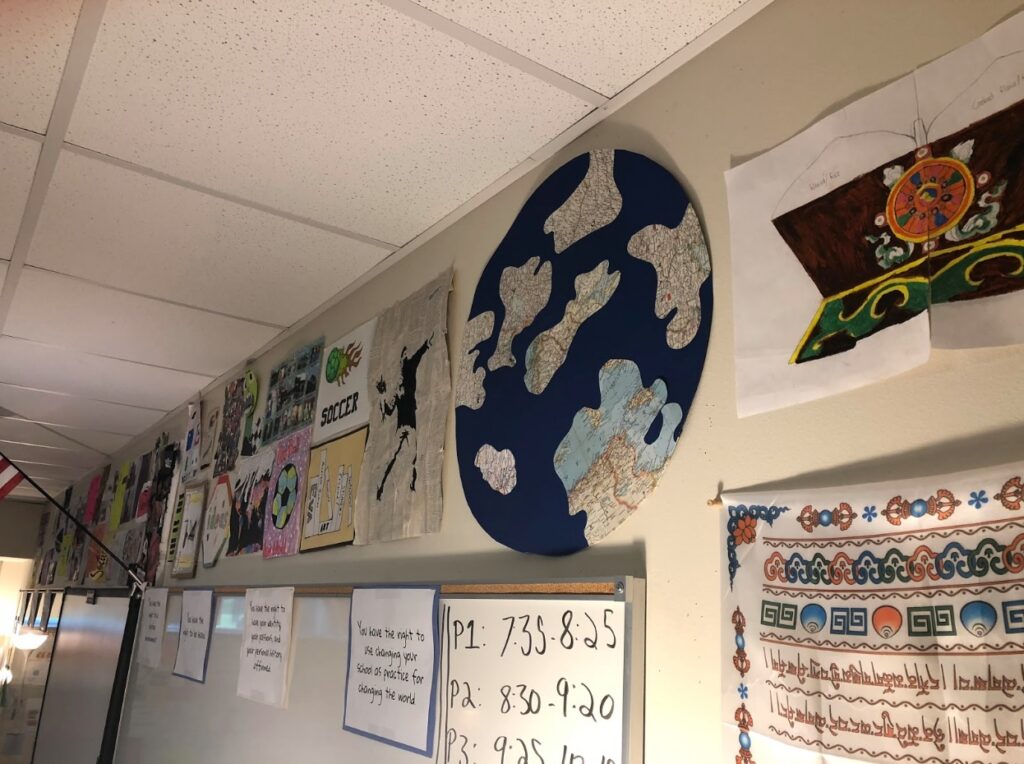
Hanging the final projects around the room is great, and in one more way sends the signal that every student is welcome, in full, in the room. But really, the time spent presenting these for each other is the most powerful part of the project. Even students who have been together for years will learn new things about each other, and as long as you have the time to give, encouraging them to ask questions of each other, make connections, and give positive feedback is a great way to set some foundations for a classroom culture based on real appreciation and acceptance for each other.
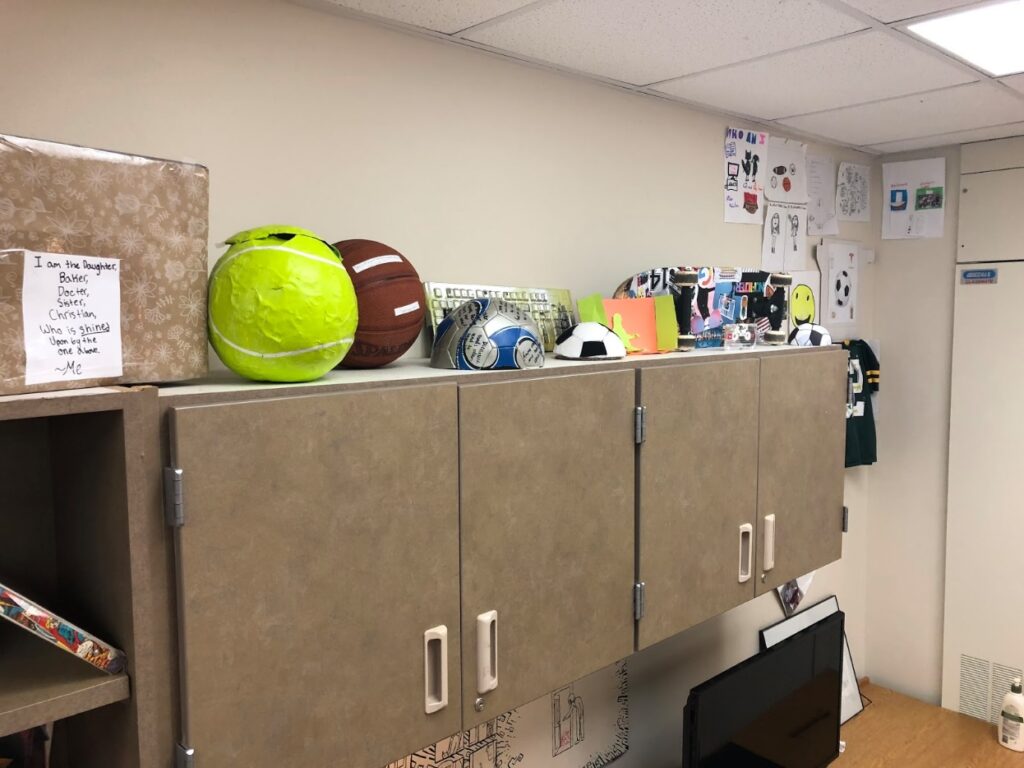
The Bucket and Friends books are fiction except all the places they aren’t. When Bucket steps back to look at all the student work on the walls of the classroom, they say a version of something I’d heard from years of students, something that told me I’d gotten at least one teacher-thing right: “It looked less like a wall of words and more like a class picture. I bet even someone who didn’t know us at all could stand in front of all the words and get a feeling for what our class was like, and if the Words were like names, then the Things were like portraits.”
Bucket and Friends: Chapter Books to Support Powerful Projects
On August 1st, 2025, I’m releasing three chapter books that follow Bucket (yes, their name is Bucket, and yes, that gets explained) and their friends as they tackle different social-emotional issues. Each book is based on a project or lesson I’ve taught and found to be impactful, with the idea that these books can be read, shared, and actively used in a classroom to support students. Bucket and Friends Save (part of) The World with a Name is based on the start-of-the-year activities above. More projects and resources can be found on my website.
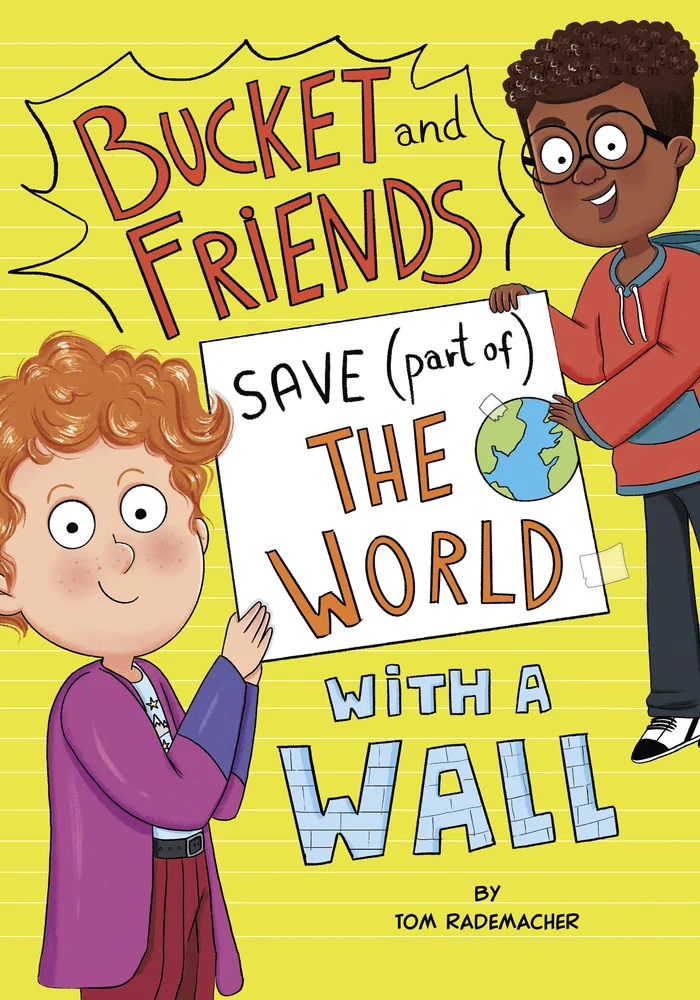
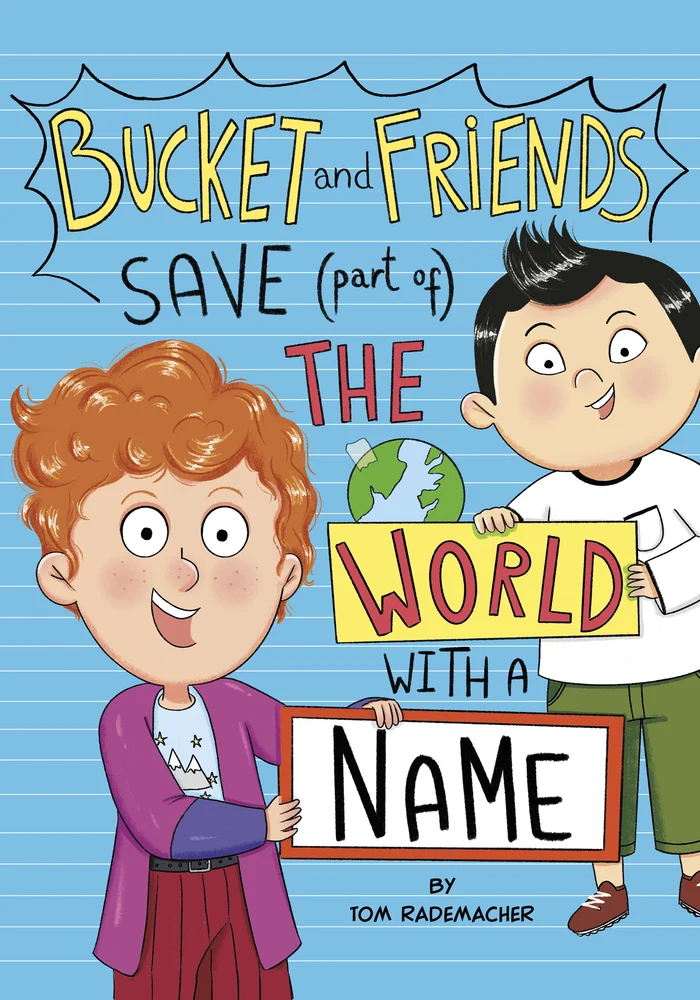
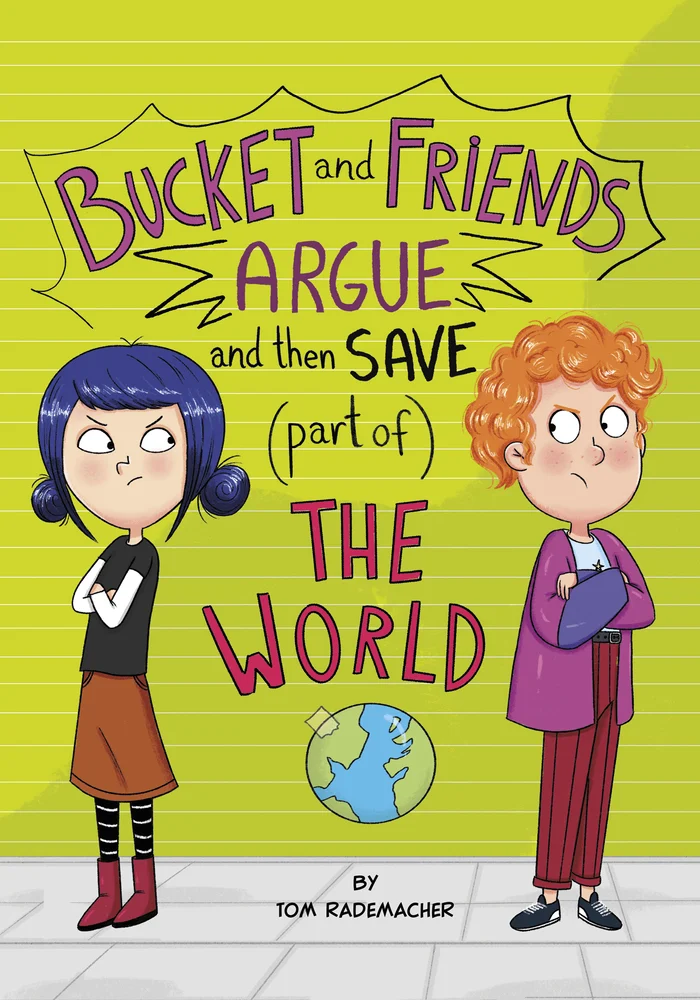
Join our mailing list and get weekly tips, tools, and inspiration that will make your teaching more effective and fun. You’ll get access to our members-only library of free downloads, including 20 Ways to Cut Your Grading Time in Half, the e-booklet that has helped thousands of teachers save time on grading. Over 50,000 teachers have already joined—come on in.


